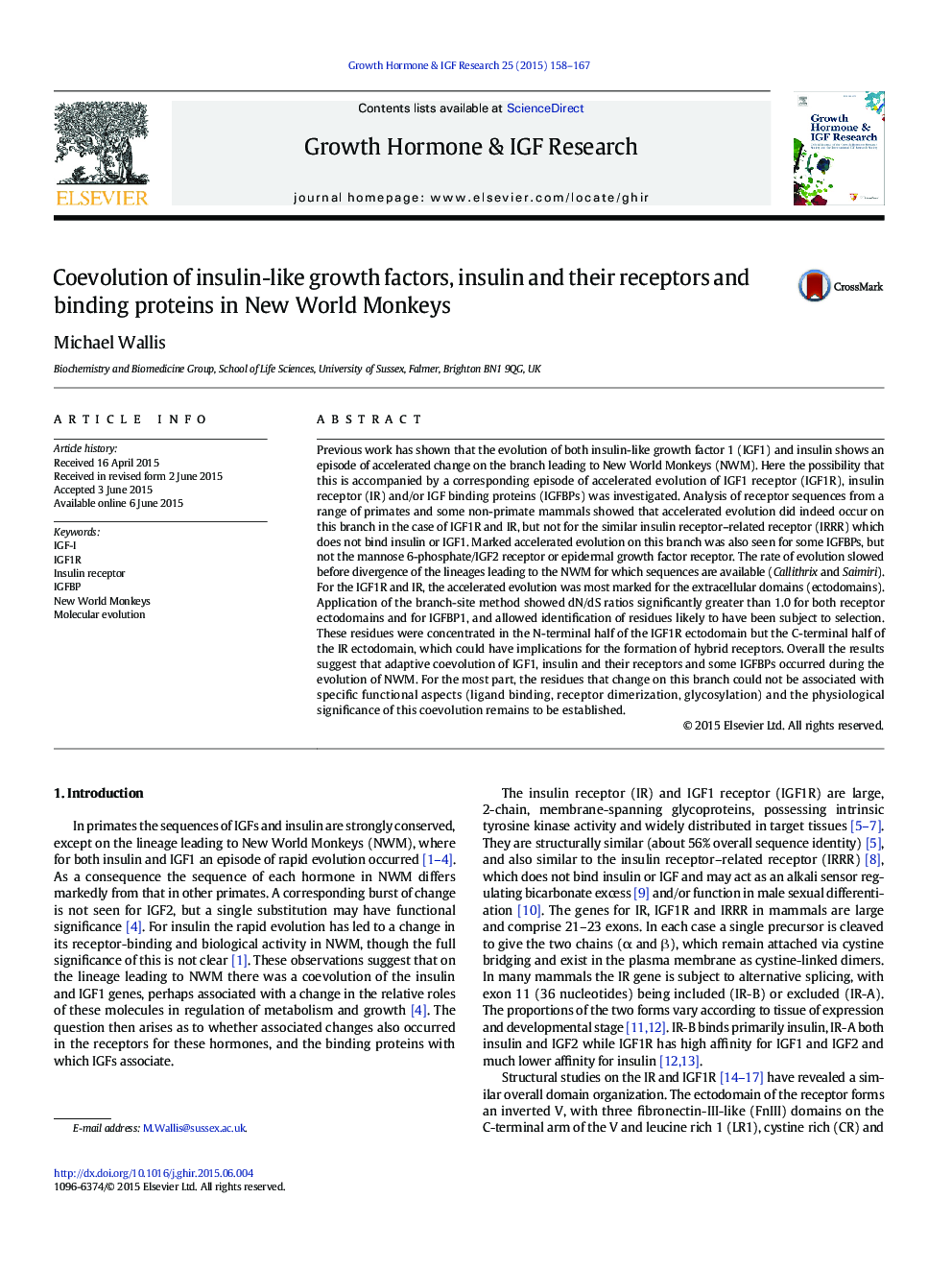| Article ID | Journal | Published Year | Pages | File Type |
|---|---|---|---|---|
| 2802546 | Growth Hormone & IGF Research | 2015 | 10 Pages |
•IGF1 and insulin changed rapidly during the evolution of New World Monkeys (NWM).•The cognate receptors and IGFBPs also showed rapid change, implying coevolution.•For the receptors, rapid change involved mainly receptor exodomains.•Adaptive coevolution was involved, implying change in biological function.•Distribution of substitutions in IGFR1 was different from that in insulin receptor.
Previous work has shown that the evolution of both insulin-like growth factor 1 (IGF1) and insulin shows an episode of accelerated change on the branch leading to New World Monkeys (NWM). Here the possibility that this is accompanied by a corresponding episode of accelerated evolution of IGF1 receptor (IGF1R), insulin receptor (IR) and/or IGF binding proteins (IGFBPs) was investigated. Analysis of receptor sequences from a range of primates and some non-primate mammals showed that accelerated evolution did indeed occur on this branch in the case of IGF1R and IR, but not for the similar insulin receptor–related receptor (IRRR) which does not bind insulin or IGF1. Marked accelerated evolution on this branch was also seen for some IGFBPs, but not the mannose 6-phosphate/IGF2 receptor or epidermal growth factor receptor. The rate of evolution slowed before divergence of the lineages leading to the NWM for which sequences are available (Callithrix and Saimiri). For the IGF1R and IR, the accelerated evolution was most marked for the extracellular domains (ectodomains). Application of the branch-site method showed dN/dS ratios significantly greater than 1.0 for both receptor ectodomains and for IGFBP1, and allowed identification of residues likely to have been subject to selection. These residues were concentrated in the N-terminal half of the IGF1R ectodomain but the C-terminal half of the IR ectodomain, which could have implications for the formation of hybrid receptors. Overall the results suggest that adaptive coevolution of IGF1, insulin and their receptors and some IGFBPs occurred during the evolution of NWM. For the most part, the residues that change on this branch could not be associated with specific functional aspects (ligand binding, receptor dimerization, glycosylation) and the physiological significance of this coevolution remains to be established.
